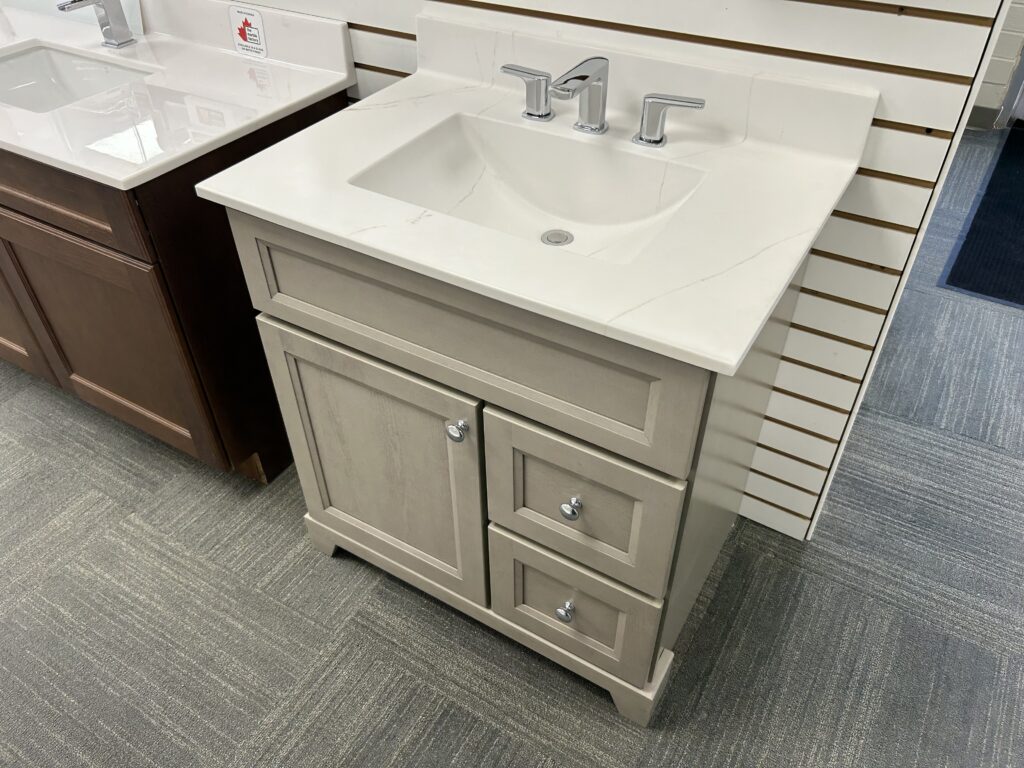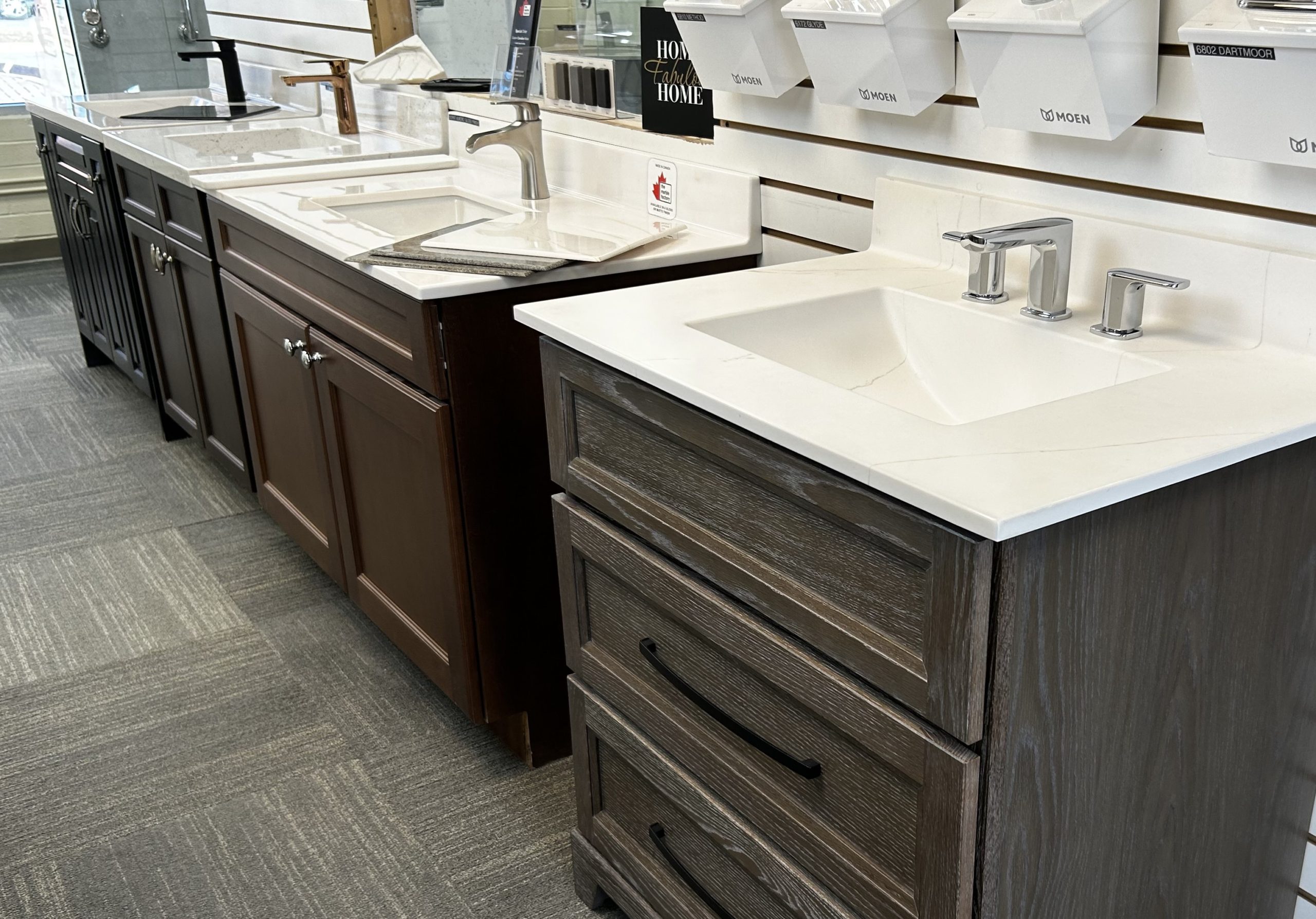
Choosing the right surface material for your bathroom or kitchen is more than a design decision. It shapes how you use your space every day and how much care it will need over time. When comparing cultured marble, quartz, and solid surface materials, the best choice depends on your budget, style, and maintenance priorities. Each option offers distinct benefits, and understanding their differences helps avoid costly mistakes down the road.
Cultured marble combines crushed natural marble with resin and pigment. The result is a durable, non-porous material that can be molded into sinks, shower walls, and countertops. Because it is cast into shape, cultured marble allows for seamless designs without grout lines or joints, making cleaning much easier than with tile or natural stone.
One key advantage of cultured marble is flexibility. Manufacturers can produce custom shapes and colors to fit unique spaces. This versatility is especially helpful for bathroom vanities and tub surrounds, where odd angles and curves can make installation challenging with other materials. Its glossy gel coating adds a layer of protection and gives the surface a polished stone look without the high maintenance of real marble.
Over time, cultured marble may lose some of its shine, but polishing compounds can restore the finish. Minor scratches can often be buffed out without professional repair. Compared with natural stone, it is lighter and easier to install, which keeps labor costs lower.
To learn more about how professional marble manufacturing processes achieve these results, explore how different materials are designed and refined for modern homes.
Quartz surfaces, often referred to as engineered stone, are made from crushed quartz mixed with resin and pigment. This makes them incredibly hard and resistant to staining. Unlike cultured marble, quartz is not cast as a single unit; it is cut into slabs and fabricated for installation.
Quartz countertops are known for consistency and durability. Because the surface is non-porous, it resists mold, bacteria, and spills from coffee, wine, or oil. Quartz does not require sealing, unlike granite or marble, and maintains its appearance with only basic cleaning. However, quartz cannot handle extreme heat. Setting a hot pan or curling iron directly on it can damage the surface, so protection like trivets or mats is necessary.
In design, quartz offers a wide range of colors and patterns, from natural stone imitations to uniform solid tones. It tends to cost more than cultured marble but less than high-end natural stone. For homeowners who want a long-lasting and low-maintenance material with a sleek finish, quartz remains one of the most practical choices.
Solid surface materials, such as Corian, are made from a mix of acrylic and natural minerals. They share some similarities with cultured marble in that they can be molded into custom shapes and repaired if scratched. However, their appearance is more uniform, lacking the natural veining seen in marble or quartz.
Solid surfaces are non-porous and highly resistant to moisture, making them ideal for bathrooms and kitchens. Unlike quartz, they are slightly softer, which means they can be scratched more easily but are also easier to repair. Sanding out marks or restoring a matte finish can often be done without professional help.
A key advantage of solid surfaces is the invisible seam. Installers can join two pieces so tightly that the connection disappears, creating a completely smooth look. This makes them an appealing choice for continuous countertop runs, integrated sinks, or custom shower surrounds.
When it comes to maintenance, the biggest differences appear in how each material responds to daily use. Cultured marble requires gentle cleaning with non-abrasive products. Harsh chemicals can dull the gel coating, so mild soap and water work best.
Quartz stands out for its resilience. It resists most stains and does not require sealing or waxing. Routine cleaning with a soft cloth keeps it looking new. The main concern with quartz is heat, as direct contact with high temperatures can leave marks that are difficult to remove.
Solid surface materials need similar care to cultured marble. Regular cleaning with a damp cloth is enough for daily maintenance. Avoiding sharp impacts or abrasive pads helps prevent scratches, though minor damage can usually be sanded out.
In terms of longevity, quartz typically lasts the longest, followed by solid surface and then cultured marble. However, with proper care, all three can perform well for decades.
Budget often becomes the deciding factor. Cultured marble generally costs the least, offering a custom look without the expense of natural stone. Its lightweight composition also means simpler installation and fewer labor hours.
Quartz, while more expensive, provides a strong return on investment due to its durability and low maintenance. Fabrication can be complex because the slabs are heavy and require precise cutting.
Solid surface materials fall in the middle. Installation requires certified professionals because seams must be perfectly bonded to maintain their seamless appearance. Though the upfront cost is moderate, the ability to refinish or repair them over time adds long-term value.
When evaluating cost, it helps to consider not just the purchase price but also installation, maintenance, and lifespan. What appears affordable initially can cost more in the long run if it needs frequent repair or replacement.
Visual preference plays a major role in choosing between cultured marble, quartz, and solid surfaces. Cultured marble often features soft veining and a glossy finish, creating a classic and elegant look. Its seamless design makes it especially appealing in bathrooms, where integrated sinks and backsplashes enhance cleanliness and flow.
Quartz offers more consistency in pattern and color. Some versions mimic marble’s natural movement, while others provide a modern, monochromatic appearance. This makes quartz highly adaptable across design styles, from traditional to contemporary.
Solid surface materials tend to have a smooth, matte finish. They are available in both subtle and bold colors, making them ideal for modern interiors. The option to create integrated sinks or wraparound counters allows for creative and functional designs that other materials cannot easily match.
Sustainability has become increasingly important for homeowners. Cultured marble uses less natural stone since it blends recycled marble dust with resin. However, the resin itself is a synthetic material derived from petrochemicals, which limits its eco-friendly profile.
Quartz production consumes more energy because it involves mining and processing natural quartz crystals, but many modern manufacturers incorporate recycled materials and use cleaner production methods.
Solid surfaces typically have lower environmental impact in production compared with quartz, though they are still made from synthetic materials. The ability to repair rather than replace them adds to their sustainability by reducing waste.
Another practical factor is repairability. Cultured marble can be polished, quartz cannot be refinished, and solid surfaces can often be restored to like-new condition. Depending on how a space is used, that flexibility can be valuable.
Every household has different priorities. Some homeowners value durability above all, while others focus on design flexibility or cost. Understanding how each material performs helps narrow the decision.
For bathrooms, cultured marble often offers the best balance of appearance, cost, and functionality. It provides the look of stone with easier upkeep and seamless installation.
For kitchens or high-use areas, quartz delivers unmatched strength and low maintenance. It is ideal for spaces where spills, chopping, and daily wear are common.
For creative designs or spaces requiring integrated shapes, solid surface materials offer the most customization. They allow continuous surfaces that feel soft to the touch while maintaining a clean aesthetic.
If you are planning a remodel or exploring custom surfaces, you can contact us to discuss how different materials perform in real-world applications and find what fits your needs best.
Before making a final decision, it helps to see and touch material samples in person. Lighting can change how colors appear, and textures often feel different than they look online.
Place samples side by side under both natural and artificial light. Test how easily they scratch with a coin or resist staining from everyday items like coffee or toothpaste. These small experiments give a realistic sense of long-term wear.
Ask about warranty details and the availability of repair services. Some materials may have long coverage periods, but only if installed by certified professionals. Understanding those details early prevents future complications.
Lastly, consider how each option fits your lifestyle. A busy family kitchen might benefit from quartz’s strength, while a guest bathroom could be perfect for cultured marble. The goal is to match beauty with function.
What is the main difference between cultured marble and natural marble?
Cultured marble combines natural marble dust with resin and pigment, while natural marble is quarried stone. Cultured marble is non-porous and easier to maintain, while natural marble requires sealing and more frequent care.
Can cultured marble be repaired if it cracks or chips?
Small chips can be filled with resin repair kits, and scratches can often be polished out. Larger cracks may require professional repair, but in most cases, the surface can be restored.
Does quartz require sealing like granite or marble?
No. Quartz is non-porous and does not require any sealing. Routine cleaning with mild soap and water is enough to maintain its finish.
How does solid surface handle heat compared to quartz or marble?
Solid surface materials can tolerate moderate heat but may discolor or warp with direct exposure. Using trivets or pads under hot objects is always recommended.
Which surface is best for a bathroom vanity?
Cultured marble is often ideal because of its seamless design, integrated sink options, and moisture resistance. It combines aesthetic appeal with practical functionality, making it well suited for daily use.

* Excluding Long Weekends